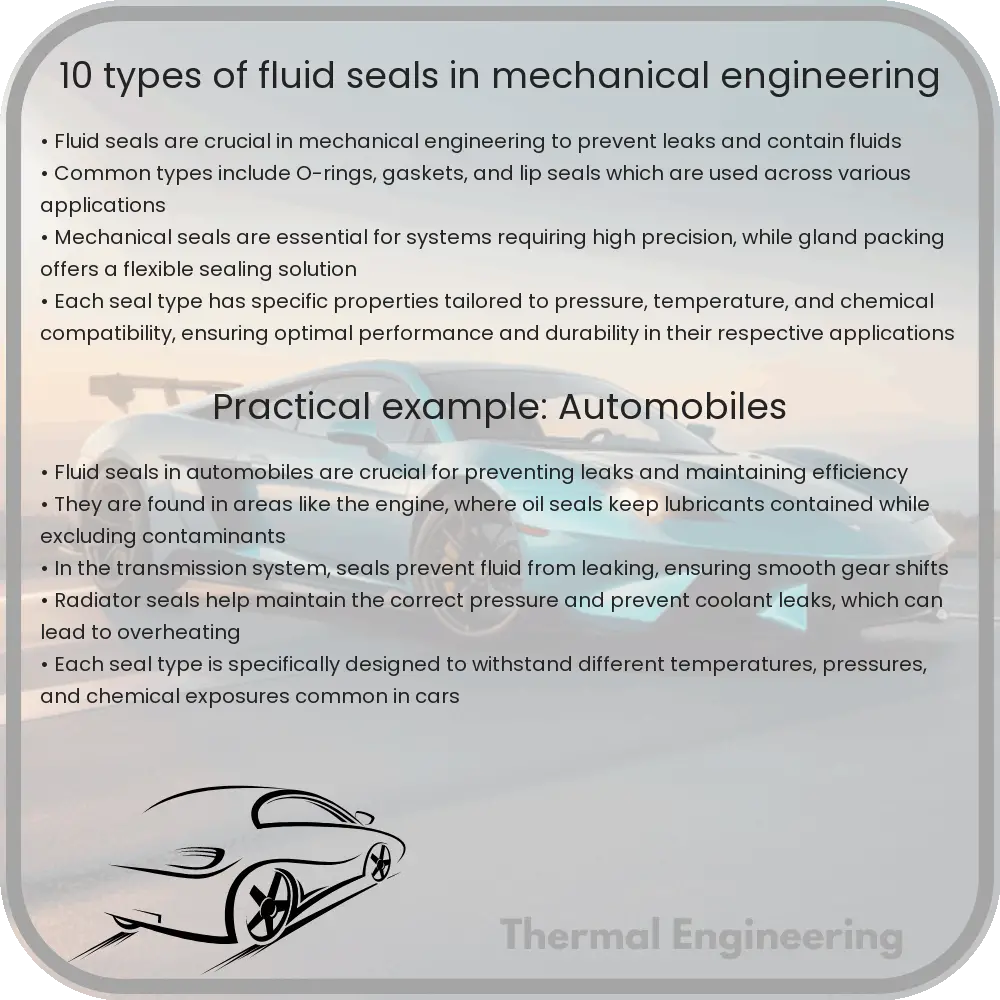Explore the essential role of fluid seals in mechanical engineering, covering 10 common types used to prevent leakage in various machinery and systems.

Understanding Fluid Seals in Mechanical Engineering
Fluid seals are crucial in mechanical engineering, serving as barriers to prevent the leakage of liquids and gases in various machinery and systems. They are used in a multitude of applications, from automotive engines to industrial pumps. Here we explore 10 common types of fluid seals used in the field of mechanical engineering:
O-Rings
O-rings are one of the most widely used types of seals due to their simplicity, cost-effectiveness, and versatility. Made typically from synthetic rubber, O-rings fit into a groove and are compressed between two or more parts during assembly, forming a seal at the interface.
Gaskets
Gaskets are flat seals composed of a flexible material, such as rubber, paper, metal, or cork. They are used between two surfaces to prevent leakage while under compression. Gaskets are essential in applications involving flat surfaces and large bolts, such as in engines and pipelines.
Lip Seals
Lip seals, also known as shaft seals, are used to seal rotary elements, such as a shaft or rotating bore. Commonly made from elastomers like nitrile rubber, they possess a lip that contacts the shaft, preventing fluid leakage.
Mechanical Seals
Mechanical seals are used in pump systems to seal a rotating part against a stationary part. They are often more durable than traditional packing seals and can prevent fluids from leaking into the environment, which is critical in chemical and wastewater management processes.
Packing Seals
Packing seals, or gland seals, consist of a rope-like material that is packed into the annular space between moving and stationary parts to form a pressure-tight seal. They are adjustable and particularly effective in applications involving high-speed rotating shafts.
Seal Rings
Seal rings are rigid ring devices that seal via axial compression, often made from metal or ceramic materials. They are mainly used in high-pressure environments such as in oil and gas pipelines.
Diaphragms
Used for their flexibility, diaphragms are versatile seals that prevent leakage between two areas of different pressures. They are extensively used in pumps and valves, particularly where a seal must also allow some movement between components.
Bellows Seals
Bellows seals consist of a flexible bellows structure that compresses and expands to accommodate variations in operational conditions. They are often used in applications requiring a seal that can also absorb movements, such as thermal expansion in piping systems.
Magnetic Seals
Magnetic seals use magnetic fields to maintain a non-contact seal between the moving and stationary parts. This type of seal is used where minimal friction and zero leakage are critical, such as in space or vacuum applications.
Composite Seals
Composite seals are fabricated from a combination of materials, typically including metal and rubber, to exploit the benefits of each material. These seals are often used in more challenging environments where pressures and temperatures vary drastically.
The choice of a fluid seal largely depends on factors such as pressure, temperature, chemical compatibility, and dynamics of the application. Each type offers distinct advantages and is selected based on its ability to meet specific sealing requirements, contributing significantly to the safety, efficiency, and reliability of mechanical systems.